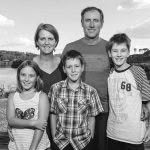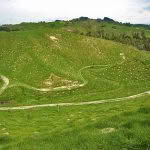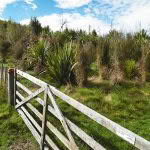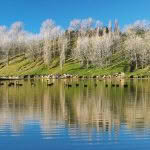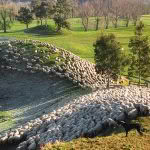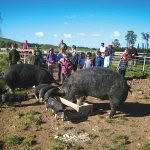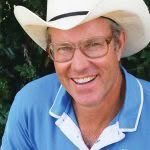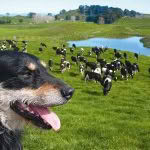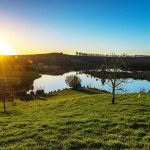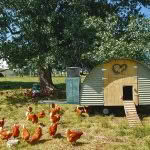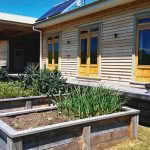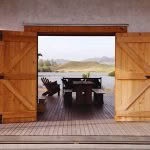Polyface farming at Mangarara Station
- Greg and Rachel Hart and family
- The family has planted more than 85,000 trees around the farm.
- The family has used crowdfunding to fund more planting of trees.
- In the middle of the farm is Horseshoe Lake.
- The farm still runs sheep as it has done for 170-odd years, but at much lower numbers.
- Pigs are profit, but also a huge hit with visitors to the farm.
- Joel Salatin
- Pipi loves to get out on the farm and work with Greg.
- Lake Horseshoe sits at the heart of the farm.
- The ‘egg mobile’ was inspired by Joel Salatin. It is part of the grazing regime, adding fertiliser and helping to control pests.
- Everything guests eat comes from the lodge’s gardens or from the farm.
- The lodge was created from two former classrooms from a local high school.
- Then retro-fitted using local and natural materials including earth plaster, and macrocarpa grown and milled on the farm.
The Hart family might run a commercial beef and sheep station, but their goal is to create paradise on earth for their community, and they’ve been inspired by one of the most famous farmers in the world.
Words & Images: Andrew Martin
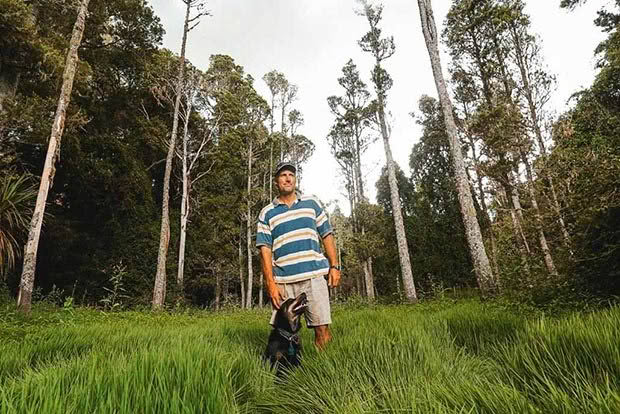
He’s a charismatic American, a world-renowned farmer who calls himself a “Christian libertarian, environmentalist, capitalist, lunatic farmer” and once wrote a book called Everything I Want To Do Is Illegal. Greg and Rachel Hart farm Mangarara Station in the Hawkes Bay. It’s 13,000km and a world away from Joel Salatin’s 200ha (500 acre) organic farm in the Shenandoah Valley of West Virginia. But to the Harts, Salatin’s way of farming is so inspirational, they are modelling their property on his philosophy which is why there are now less sheep, more cattle, and pigs and poultry have joined their flock.
“To say he is inspirational is a massive understatement,” says Greg.
“Joel has not only revolutionised beyond organic agricultural production, he has an incredible ability to communicate his experience and the reasons why more people need to adopt similar systems adapted to their local environment.
“I have treasured the hours I have spent driving around the country with Joel as my passenger talking about all sorts of things, but although he is probably the best known farmer in the world – and isn’t a sustainable food producer and land steward more important than movie stars, politicians or sports stars? – he is an incredibly humble, supportive and caring man.”
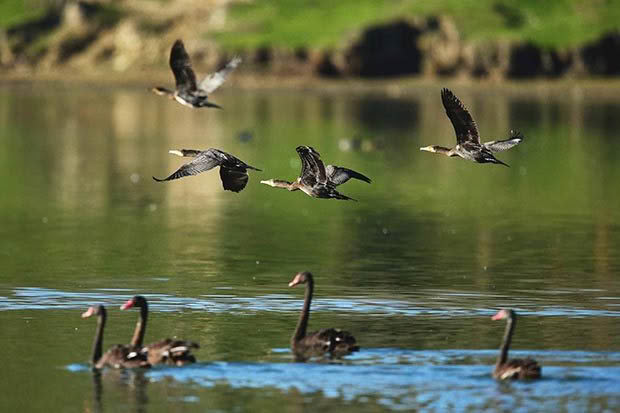
The Salatin way of farming is a big change for a man brought up with conventional NZ methods. Greg got an agriculture degree at Massey University, then worked as a farm consultant, in livestock exports and as a grain marketer, before buying into his parent’s farm in 1996. Rachel grew up in Hawkes Bay and holds the show together with her administrative and management skills, running the family and the day-to-day operational activities of the farm.
Then there are their children, George, Bill and Emma. George is an avid reader, but he’s also keen to get out and engage with farm visitors. Bill has a dry sense of humour and enjoys a good board game. Emma is the budding artist and chef of the family, but she also loves getting stuck into farm work whenever she can. Oh, and I forgot Pipi the dog. Pipi loves helping out around the farm and is always ready for a day out on the quad with Greg.
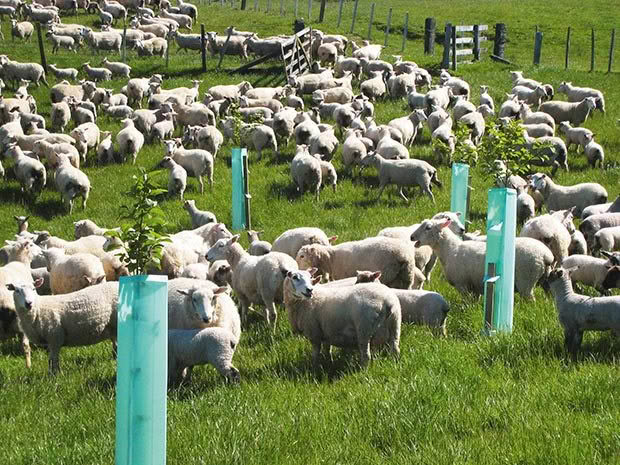
On most conventional farms, resources such as water, land and animals are commodities to be converted and exploited for financial profit. In contrast, the Harts see reverence for the land and all that goes with it. They feel there is an unfolding environmental catastrophe that is currently taking place around the globe and it needs to stop.
“Species extinction, climate change and resource depletion are all major issues eroding the ecological fabric of the planet,” says Greg.
“Humanity is on the precipice of an unfolding tragedy which is ultimately an evolutionary step. These events are giving us the opportunity to take an evolutionary leap in consciousness and become aware of the interconnectedness of all life which will lead to us live in harmony with our environment and each other.”
Greg and Rachel’s journey has been inspired by books, articles and documentaries. They’ve drawn inspiration from Salatin, but also Ronald Wright, Paul Hawken, Lester Brown, Charles Eisenstein, Eckhart Tolle, and many others. They took classes at the local high school, learning about permaculture and sustainable systems design. They joined the Sustaining Hawke’s Bay Trust and the Hastings Environment Centre, which runs classes in environmental awareness (Greg is now a trustee).
Local representatives of government from the green movement also helped educate and inspire the Harts to move toward more sustainable systems. Greg has since organised a series of community meetings on climate change, peak oil, and the Transition Network that proposes ways in which towns can tackle these problems.
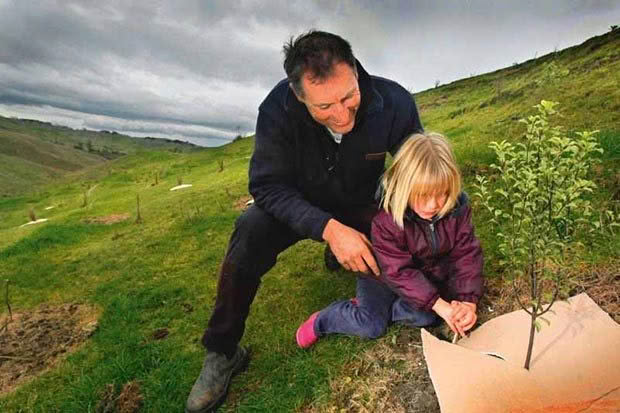
He says unlike many other conventional farmers, he is aware of the reliance of modern agriculture on fossil fuels, specifically oil.
“Oil is a finite resource and has funded the expansion of economies over recent decades. While national Governments pursue a ‘business as usual’ approach and hurtle toward the brick wall at full speed, I am cautious of the rhetoric of politicians and economists who forecast a boom in food demand that will drive New Zealand agriculture into the future.
“While the standard of living is rising in China and India, as well as the rapidly increasing global population, food availability is going to be a massive issue this century. The global industrial food system is totally dependent on cheap abundant energy which, either due to reduced availability from supply and demand pressure or simply because we wake up to the fact that fossil fuels must remain in the ground to mitigate climate change, this energy bonanza seems unlikely to continue for much longer.” Greg freely admits he too is addicted to oil.
“We are trying to wean ourselves off oil by making changes to the way we farm. We are really interested in and focused on sequestering carbon into the soils by holistic and biological fertility management. We have stopped using aircraft to apply fertiliser and are working on trying to perfect holistic grazing management techniques.”
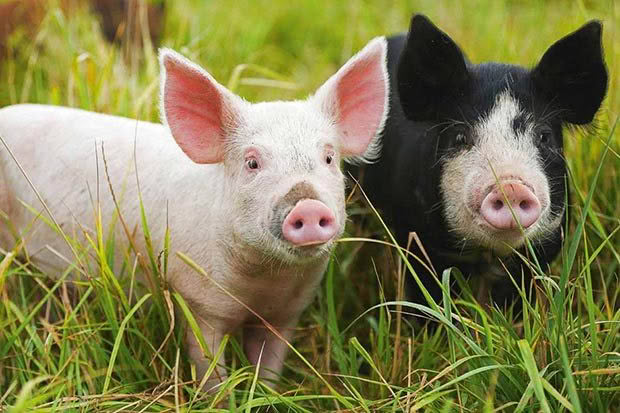
Holistic grazing is where pastures are left to grow long before they are grazed (Joel Salatin recommends waist high), then grazed and trampled by densely stocked mobs of cattle.
“The process mimics the natural grazing patterns of ruminant animals that once roamed the great plains of the earth, which over time built deep rich soils, working to become largely self-sufficient in nutrient inputs, using worm farms and other locally sourced minerals.”
That’s where Joel Salatin comes into the picture. Through extensive research and reading, Greg and Rachel came to the realisation that what humans are doing is completely against the natural systems which support them, something Salatin has been writing and speaking about for years.
On Polyface Farms, nothing is done conventionally, but it all works beautifully. Salatin says they haven’t spread chemical fertiliser in 50 years, they don’t plant seeds, and they don’t own a plough, disc or silo. The food they produce – beef, pork and poultry – is only sold to families, restaurants and retail chains within a four hour driving time of his farm so that it is fresh and sustainable.
Instead of fertiliser, grass grows to about 1m high, and is then intensively grazed, only twice a year. Cows take up large amounts of starch, then produce ‘pumpkin pie’ consistency manure which helps to raise fertility, especially on areas like hills. It’s a very different way of running a farm compared to NZ, as Salatin told NZFarmer back in 2010.
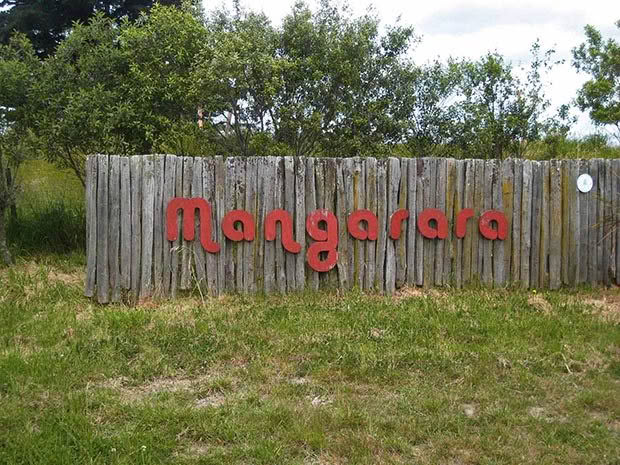
“Basically we’re grazing hay. I call it mob-stocking-herbivorous-solar-conversion-lignified-carbon-sequestration-fertilisation.”
The Harts are busy making this system come to life on their own farm. The couple now run around 1000 sheep, plus lambs – around half what the farm used to run – 600 head of cattle, 18 milking cows, 25 Berkshire pigs, and a few hundred chickens. The chickens are housed in an ‘egg mobile’ which is moved around the farm, providing the chooks access to the best possible range of pasture and forage.
“The lessons we apply on Mangarara are stacking layers of complementary animal production systems onto the landscape,” says Greg.
“We now have a small dairy herd that supplies milk to not only the people on the farm, but also raise 60 extra calves, as well as producing milk to feed to pigs and hens. Milking the dairy cows is popular with visitors who stay in the lodge accommodation on the farm and it is also educational for the many school children that visit.”
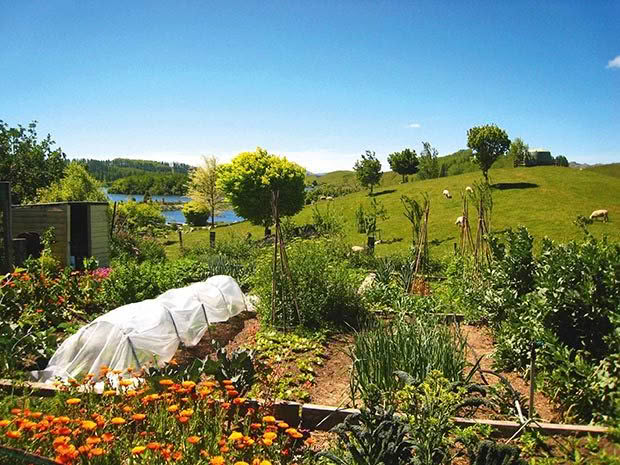
Any manure that is excreted in the dairy is scooped up and put into worm farms, which produce nutrients to be applied back onto the land. “We have created more productivity, profitability and work opportunities than would have been possible if we stuck to just sheep and beef,” says Greg. “And it creates a whole lot more interest and fun, having the diversity of animals and the people we now get to meet because of this more holistic approach to farming.
The Harts are now in the process of transitioning to a regenerative farming system and a big part of that is planting large areas with trees. Salatin’s own property is 40ha of grazing pasture, with the other 160ha in permanent tree plantings.
“This system uses nature as the guide, with perennial tree crops integrated with shrubs and pasture and diverse animal species,” says Greg.
“It will produce abundant healthy food without the need for imported additives, while sequestering carbon into the soil which is a major solution to climate change.
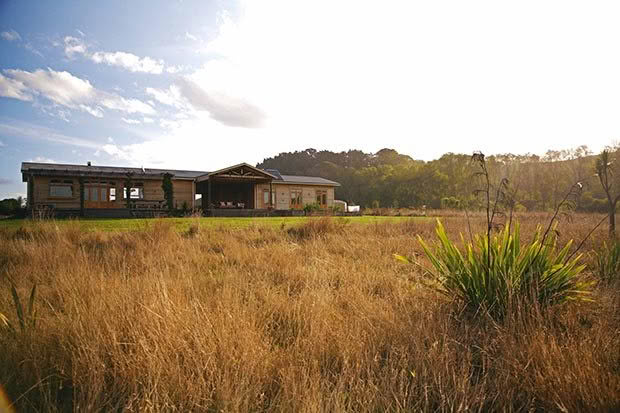
The Air New Zealand Environment Trust has helped to fund the planting of 85,000 native trees, and the Harts are busy each year planting thousands more. The farm has also received funding from the Million Metres Streams Project to plant more trees around Horseshoe Lake which is located on the property. The area is now also covenanted, to help protect the lake and its water quality forever.
“We have to transition away from a disruptive model of agriculture towards a regenerative model of farming, moving towards a model which restores the natural balance back to the land and ecosystems while developing diverse integrated regenerative farming systems has been our primary goal over recent years.”
The couple have been busy with the practical aspects, like changing over to organic fertiliser, but just as important for them is spreading the message of sustainability throughout their community. They’ve been implementing Regenerative Agriculture principles and hosting RegenAG events and courses each year.
“We are big on sharing our experiences and learning with others and often open the farm to the public to enable others to reconnect to the earth.”
The Hart family’s philosophy is all about building healthy soils, regenerating ecosystems, building a strong resilient community, caring for all animals with respect, following the permaculture principles of earth care, people care, and fair share. They also see themselves as being in a privileged position.
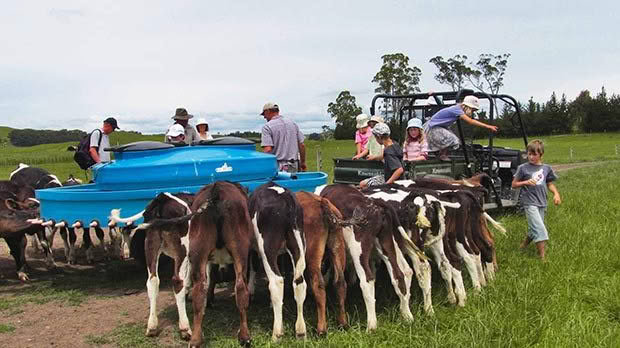
“With this privilege comes the responsibility to provide a sustainable future for generations to come. To further progress this transition to sustainable abundance, we are exploring alternatives to restructure ‘ownership’ to ‘stewardship’. We are doing this by exploring various community land trusts models from around the world.”
While Greg understands the challenges ahead, he is an eternal optimist. “Humans can still choose the alternative road, but the intersection is approaching fast. The solutions are already here and the key to make it happen is inside our hearts.”
MEAT THAT MEANS SOMETHING
The Polyface Farm philosophy is to sell all their produce to their local community so nothing is sold to a person or business more than a four hour drive from the Salatin’s family farm. The Harts are keen to do the same thing. Their goal is to grow a community of supporters who buy their meat directly from the farm, to create a truly sustainable business. Their ‘meat box’ contains a selection of free range beef, pork and lamb, including mince, sausages and bacon, containing about 10 meals worth of meat for a family of four and costing $200.
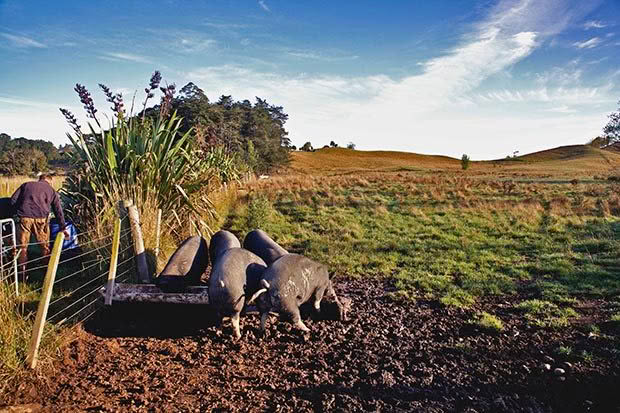
“The other important change Joel has inspired us to make is to direct market produce from the farm. While we are still in the early stages of developing relationships with people who commit to regularly buying a ‘meat box’ from the farm, we are excited about building this community of people who understand that every bite they take of Mangarara meat is supporting the regeneration of soils by sequestering carbon from the atmosphere due to the system of holistic grazing practised on the farm, as well as increasing bio-diversity because of the extensive tree planting program on the farm, and also strengthening local community and economy as meat is donated to local charities and we do business with other local businesses.”
PLANTING TREES, ONE METRE AT A TIME
The Million Metres Stream Project has a goal to collectively fund a million metres (or 1000 kilometres) of tree planting along stream banks around New Zealand through crowdfunding. Anyone can support a project somewhere in New Zealand by funding the trees for a metre of planting along a stream. The project you support receives the funds and plants the trees the next winter, and the group keeps you updated on your project’s progress. The project is a collaboration between the Sustainable Business Network and Enspiral (a NZ social entrepreneurs group) and is supported by the Department of Conservation. Anyone with a waterway on their property can apply, but there are conditions. www.millionmetres.org.nz
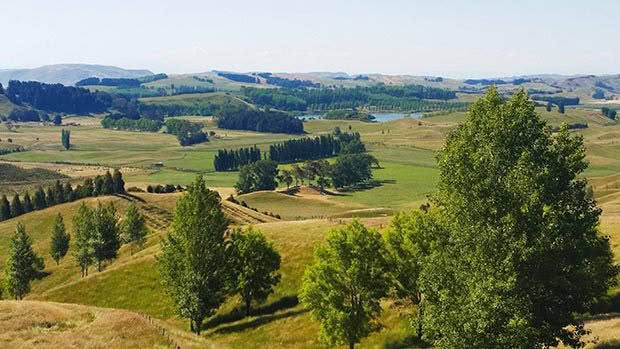
SHARING IS CARING
To help facilitate learning, Greg and Rachel have built a beautiful eco lodge out of recycled materials to accommodate visitors and guests who wish to experience the transition of the farm. The lodge overlooks the tranquil Horseshoe Lake. Guests can kayak around it and experience the abundant bird life that surrounds the property.
“We believe people have become disconnected from the land and it is crucial for people to re-connect to the natural environment,” says Greg.
“The lodge will help people reconnect with the land, and witness the transition of a traditional farm to one that is more sustainable, and enjoy an opportunity to intimately experience where good food comes from. “By letting people share the experience of a working farm, and through seeing, touching, tasting and experiencing life on the farm, people can begin to realise what it means to move towards true sustainability.”
Love this story? Subscribe now!
 This article first appeared in NZ Lifestyle Block Magazine.
This article first appeared in NZ Lifestyle Block Magazine.
